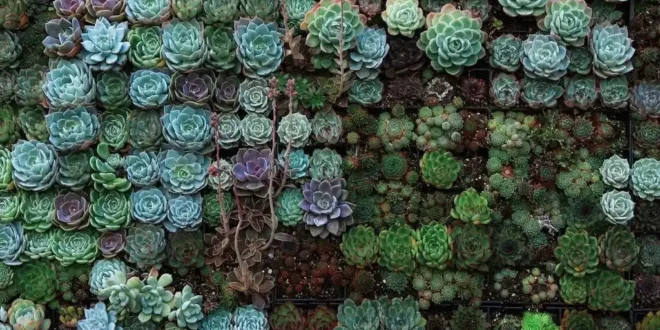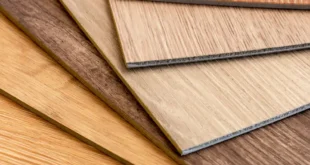Did you know that the global vertical garden construction market size is projected to reach $2468.3 million by 2032?
Vertical gardens have surged in popularity. They present a stylish and space-saving approach to gardening. It can transform a wall into a vibrant living tapestry that can be both functional and visually stunning.
In this article, we’ll share 15 creative ways to arrange vertical garden plants that will elevate any space. Read on to help you maximize space and enhance aesthetics.
Color Blocking
Use color theory to create striking designs. Cluster plants with similar hues or contrasting colors to create eye-catching blocks of color. This works well in outdoor vertical gardens where the colors can pop under natural light.
You can also use this technique for edible gardens. You can separate herbs with complementary colors to make them both appealing and functional. This way, you can easily identify which herbs to pick for your cooking needs.
Textured Patterns
Mix up plants with different leaf shapes and textures to generate an engaging wall. Combine spiky succulents with smooth ferns to form a tactile tapestry. This will add interest to your vertical garden and create a visually stunning display.
Moreover, if you’re using a living wall planter, make sure to mix in cascading plants to create depth and dimension. This will add more texture and make your vertical garden look fuller.
Symmetrical Layouts
Create a sense of order with symmetrical layouts, especially when using geometric planters or shelves. This method works well in small spaces, creating balance and harmony.
For example, you can use two identical planters on each side of a doorway or window. This will add a touch of elegance and create a focal point in your space.
Vertical Plant Wall
For a uniform and minimalist look, line up your plants alongside each other. This creates the illusion of a living wall, perfect for a contemporary indoor space or a feature wall in your garden.
You can achieve this look by using the same type of plant in each pocket or hanging planter. You can also alternate between two different types of plants to create a checkerboard pattern. To help you with this, buy a wall garden kit here.
Cascading Effect
Accentuate the vertical element by letting trailing plants cascade down. Vines, like pothos or philodendrons, can grow long and lush. This creates a waterfall effect against your wall.
You can also achieve this look by using hanging planters at different heights. Cascading plants are great for hiding any unsightly marks or blemishes on walls. It’s a clever way of covering up and adding beauty to your green home decor.
Mix of Foliage and Flowers
Blend greenery with seasonal blooms for a constantly changing visual display. This variety not only adds to the aesthetic appeal but also supports local pollinators. This makes your vertical garden a mini wildlife oasis.
You can also choose plants that complement each other, such as using different shades of pink or purple flowers with green leaves. This will create a cohesive look and add pops of color throughout the year.
Trellises and Tiers
Create structure and height with trellises and tiers. This setup supports climbing plants. It also gives your garden a multi-dimensional look that can be appreciated from various angles.
Trellises can be used for both indoor and outdoor gardens. You can also use them to save space by growing climbing vegetables, like tomatoes, cucumbers, or beans.
Seasonal Rotations
Keep things fresh by swapping out plants with changes in the season. Use annuals for bursts of color in summer, and switch to hardy greens during the winter months. This way, you have a year-round display without having to replant the entire garden.
You can also experiment with different plants and see what works best for each season. This will keep your vertical garden looking vibrant. It also allows you to try out new plant combinations.
Edible Vertical Gardens
Edible plants such as strawberries, salad greens, and small vegetables can thrive in a vertical garden. It’s both a feast for the eyes and a fresh produce source!
You can use hanging pockets or shelves to grow these plants. This will also save space in your garden and make it easier to harvest fruits and vegetables. Plus, it’s a great way to add more greenery and healthy food options to your diet.
Vertical Succulent Garden
Succulents are versatile plants that can grow in both indoor and outdoor vertical gardens. They come in various shapes, sizes, and colors. This makes them perfect for creating unique arrangements.
You can use a variety of succulents to create a living wall art piece. You can also mix them with other types of plants for a more textured and visually appealing display. Plus, they require minimal maintenance and can withstand extreme weather conditions.
Herb Garden Wall
Grow your herb garden on a wall for easy access to fresh herbs while cooking. This is great for small kitchens or apartments with limited counter space.
You can use a combination of hanging planters and pockets to grow different types of herbs like basil, parsley, mint, and thyme. This will add both functionality and beauty to your kitchen space.
Vertical Garden Mural
Take your vertical garden to the next level by incorporating it into a mural or artwork. You can use plants with different shades of green to create depth and dimension in the mural.
This is perfect for outdoor spaces or building facades. It adds a touch of nature to urban environments and creates an impressive visual statement.
Inverted Hanging Garden
For a more unconventional approach, try an inverted hanging garden. This involves suspending planters from the ceiling or overhead structures. It creates a beautiful visual display that can also save space on floors or walls.
You can use this technique in any room of the house, from living rooms to bedrooms and even bathrooms. It’s also a great way to grow plants that require more sunlight or air circulation.
Arranging Vertical Garden Plants
The beauty of vertical garden plants lies in their versatility. The arrangements above are just starting points. Feel free to experiment, switch things up, and make your vertical garden a true expression of your personality.
With these gardening innovations in mind, you’re well on your way to cultivating a vertical oasis that is not only functional but a work of living art. So, bring some greenery into your life today and start arranging those plants!
Do you want to see more helpful tips you can use right now? Feel free to explore more of our blog!
 SlushWeb Live the Way You Love
SlushWeb Live the Way You Love



